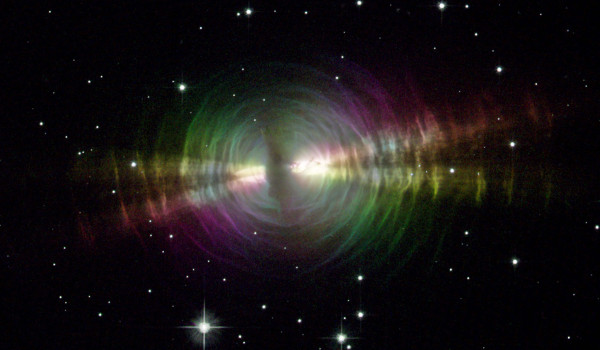“Man loves company — even if it is only that of a small burning candle.” -Georg C. Lichtenberg
The Sun, like all stars initially, burns hydrogen fuel into helium through the process of nuclear fusion. But as the Sun ages, as do all stars over a certain mass, it starts burning those heavier elements in its core, going through different phases of its life cycle and eventually ending in a planetary nebula/white dwarf combination.
But are these transitions sharp or gradual, and what of even more massive stars that start burning carbon, oxygen, silicon and so on? What do the different phases in a star's life cycle really look like, and how does the transition work at every stage?
The answers are right here for you on today's Throwback Thursday!
More like this
“Man alone is born crying, lives complaining, and dies disappointed.” -Samuel Johnson
"The self-same atoms which, chaotically dispersed, made the nebula, now, jammed and temporarily caught in peculiar positions, form our brains; and the 'evolution' of brains, if understood, would be simply the account of how the atoms came to be so caught and jammed." -William James
“Mapping out the elements in a star is like reading its DNA. We’re using those DNA readings to decode the history of the Milky Way from the stars that we can observe today.” -Steven Majewski
"Some painters transform the Sun into a yellow spot, others transform a yellow spot into the Sun." -Pablo Picasso



Do we know any star which is converting O->Si?
Ethan, is there any way short of being able to measure the energy spectrum of neutrinos that we could diagnose how far along the sequence a massive giant star is? Or will we be forever uncertain and continue to have to say, Giant star XXX, could supernova .1second from now -or maybe not for a million years?
I could think of some milestones marking a star like the sun reaching middle age, here are a few:
(1) When the hydrogen fraction at the center reaches half of what it started out as.
(2) When the (fusion) energy production rate at the center drops below the rate further out*, (i.e. its starting to transition to shell burning.
(3) When the cumulative energy released from fusion is half the total for the stars entire lifespan.
Would you happen to know when these milestones will be crossed for the sun?
*Because too little hydrogen is left.
How long until "wow" starts an argument over something on this thread?
How long till trolls stop trying to derail conversations with argumentative claims?
Never, I reckon.
You should know.
I know lots, Raggie.
What, specifically, do you want to know?
Which came first the chicken or the egg?
The Egg.
If the star is fusing silicon into iron for only one day, how long does the degenerate iron core exist?
Normally much less time than it takes to fall in at the local gravitational speed.
There's little keeping the star up when it turns to iron.